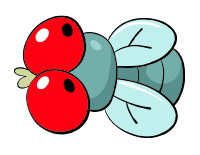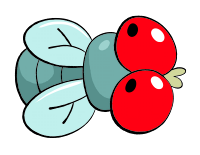FRIDAY THE 14th, JULY 2023:
ARACHNOCAMPA LUMINOSA
So there wound up being a four year gap since the last "Flyday" page. Oops! I got sidetracked. But today you can learn about GLOW WORMS!
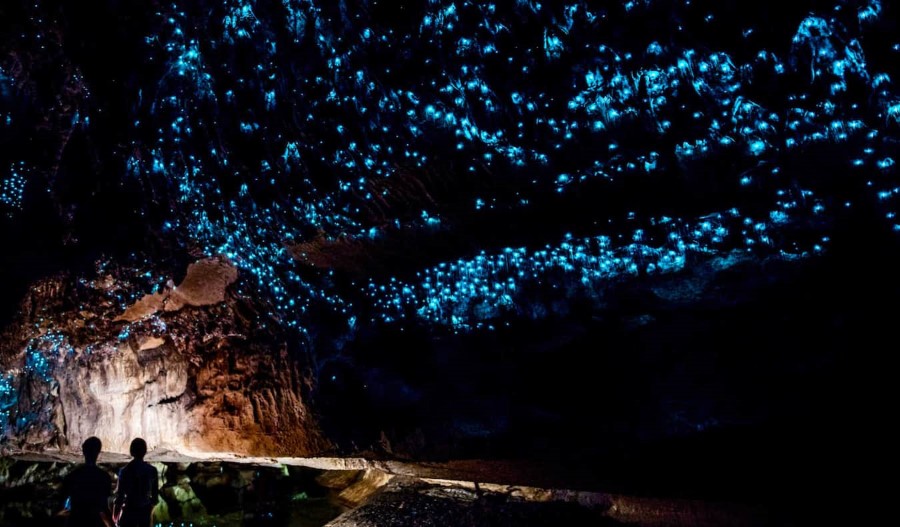
Nomadic Matt travel blogs
In just a few known caves around the world - most famously in New Zealand - the ceilings sparkle with millions of tiny blue lights. To the untrained eye, it's almost like a night sky shimmering with stars.
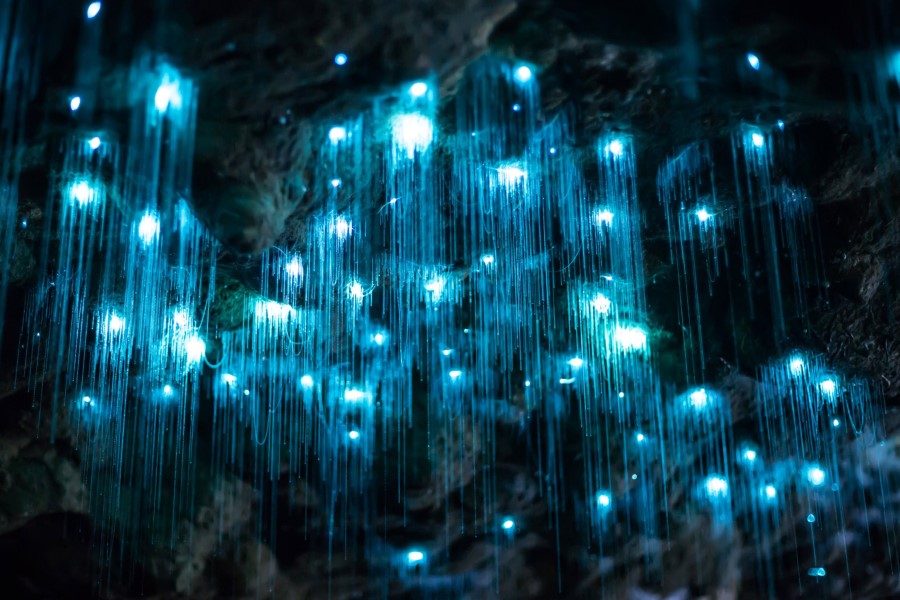
Stoked for Saturday
Get up closer to those stars, and you'll find their vivid blue lights are illuminating clusters of dangling, transparent strands, like icicles gleaming in moonlight, even cooler and more gorgeous!
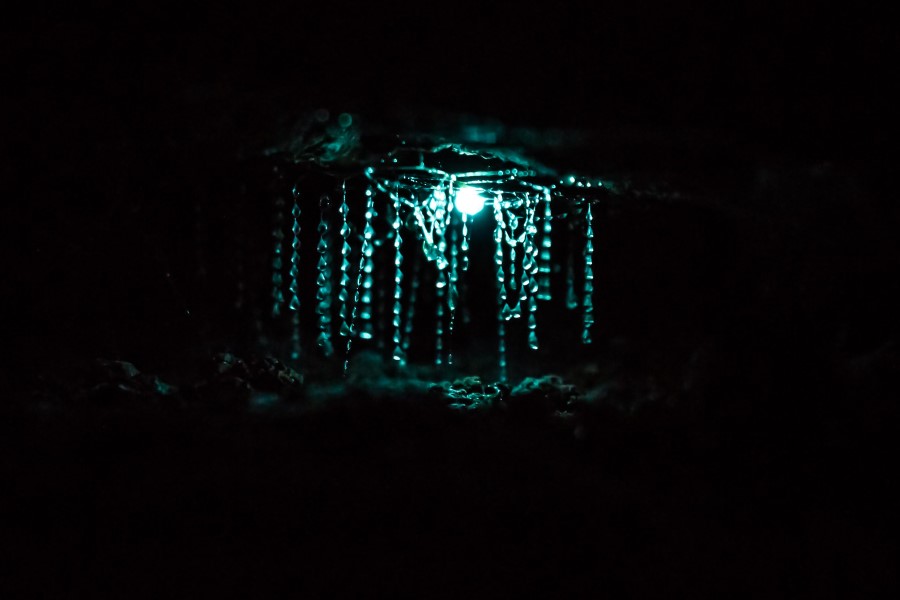
Boaz Ng
Zero in closer still, and you'll discover that each point of light is surrounded by dozens of the hanging threads, which in many species are also lined with tiny "beads," of a clear liquid, like strings of pearls.
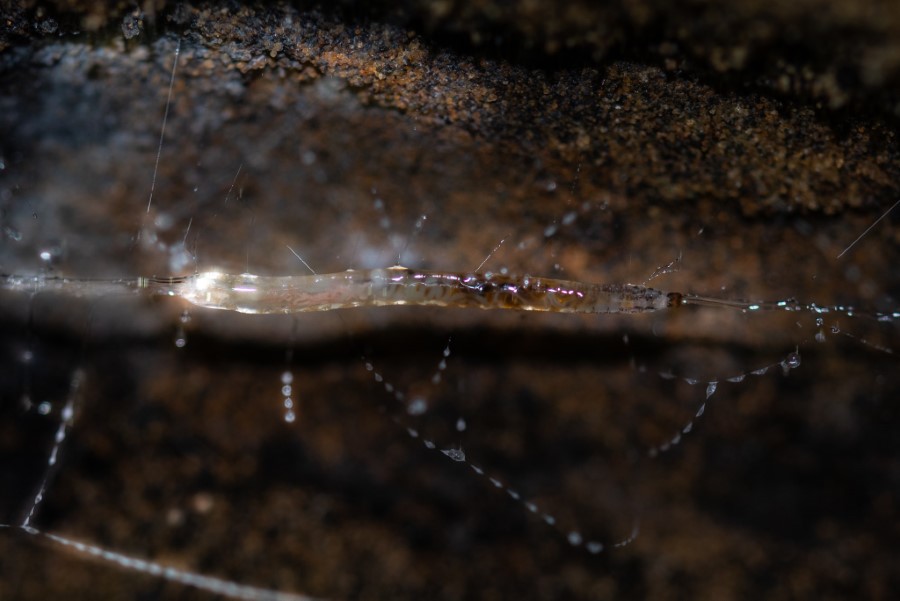
Richard
So, for the most beautiful and spectacular vision of them all, you'll want to turn the lights on and see where the glow is really coming from: a spectacular, three centimeter translucent maggot living suspended in a majestic mucous sleeve at the center of a glorious slime web. This is a member of the genus Arachnocampa, which comprises only nine identified species around the world. While the famous glow worm caves boast the largest concentration of these animals, they can also be found inhabiting smaller crevices, overhangs, tree branches and dense foliage in parts of New Zealand, Tasmania and Australia, seeking locations where the air is still enough that their sticky chandeliers don't get tangled up.
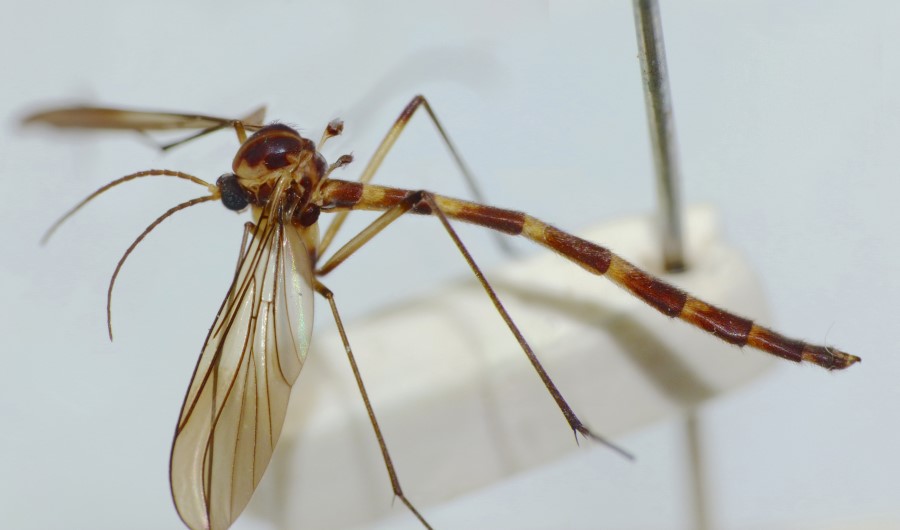
Photo by Steve Kerr / Otago Museum
In their adult form, these insects are a variety of fungus gnat, a diverse group that includes many tinier, more common members just about everywhere on the planet, most of which, as the name implies, only feed on fungi. Arachnocampa are relatively massive compared to most fungus gnats, still over a centimeter or so as long-legged, long-tailed adults you might even mistake for large mosquitoes or small crane flies. Though they no longer produce light after reaching maturity, they still glow in the pupal stage, with males emerging first and congregating around the lights of developing females. This romantic use of their luminescence is a far cry, however, from their more violent youth.A whopping fourteen years ago, I actually got to write about these insects for the comedy website Cracked.com, which left most of my writing about them unedited, so allow me to steal an excerpt from myself:
"Imagine that you're a moth in New Zealand (please, as if you weren't already). You're whirling around in the dark one night, thinking moth thoughts--how much you like light, you wish you had some light, isn't light great--when you accidentally blunder into a cave. No worries, happens all the time. You don't exactly have GPS here; you're just a stupid moth. So you turn right around and hey! There's the sky right there! I guess you weren't in a cave after all! Isn't being a moth great?
You spread your wings and spiral up, up into that sparkling sea of stars... and smack your face right into one.
Oh god, did you finally do it?! You did! You flew towards the sky-lights so hard that you actually reached it!
You turn to flap away to brag to your moth friends back home, but something is pulling you back. As you're hauled up into the heavens themselves, your last sensation is of something long and slimy chewing its way into your sides."
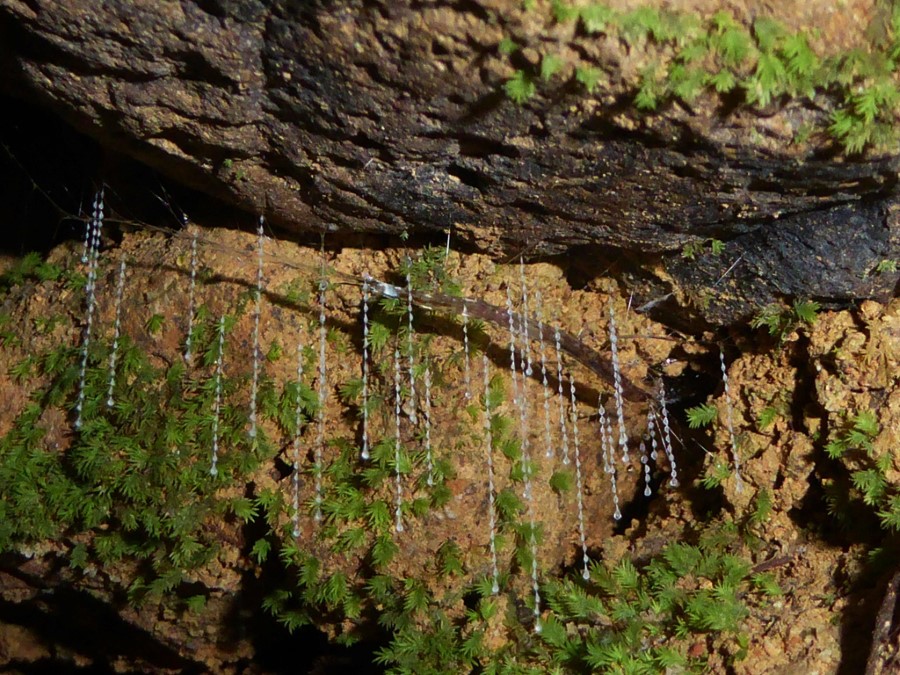
epitree
Maybe I made it a bit more sensational than it really is, but on the other hand, actually no I didn't. It is exactly that sensational. Night-flying insects are attracted to the lights of Arachnocampa larvae for the same reason they're attracted to candle flames or streetlamps: they evolved under the assumption that the only source of light at night is normally going to be the moon and the stars, so to orient themselves, they just need to head for the brightest thing they can see. As far as a foolish, tasty moth is concerned, Arachnocampa is a monster disguised as the moon, and when they get together in those massive, subterranean colonies, they've essentially built an entire decoy sky. A sky that eats. And in case that didn't you in enough awe at nature's savage beauty, the droplets of glue are actually built with the creature's urine.

Arachnocampa aren't completely unique among fungus gnats, either; another fungus gnat genus has its own luminous, web-making larvae, including the species Neoceroplatus betaryiensis, which in 2019 became the first record of a bioluminescent fungus gnat in South America. The feeding habits of this species have never been observed, however, and it had no sticky snares. It's possible that these glow worms only feed on fungi, in which case the lights are more likely a warning to predators that they may be poisonous or at least taste awful.

The entire strategy of the Arachnocampa, complete with the sticky globules, did evolve convergently in the only distantly related Orfelia fultoni, clear across the world in parts of the United States. While New Zealand can brag about the world's densest and brightest aggregations of flesh-eating moonbeams, our AMERICAN-MADE pee monsters individually boast the brightest recorded light of any bioluminescent insect, each larva actually illuminating at three points along its body instead of just the single measly lamp of Arachnocampa. These can be found in parts of Alabama and surrounding states, most notably in Alabama's Dismal's Canyon, where the insects are awesomely nicknamed Dismalites.

